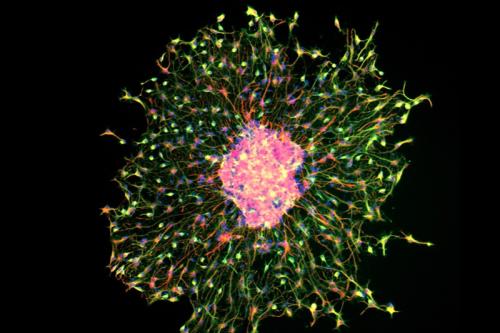
UCLA study unveils key mechanisms driving stem cell aging
A new study led by UCLA scientists has uncovered significant insights into stem cell aging, specifically in neural stem and progenitor cells, or NPSCs, in the mouse brain. The research reveals that NSPC aging is primarily characterized by a reduced efficiency in producing proliferative cells, rather than alterations in cell lineage. Importantly, the study identifies the downregulation of age-dependent genes due to epigenetic deregulation as a key mechanism driving this aging process, offering potential avenues for rejuvenating aging stem cells. The study is published in Nature Aging.
Stem cell aging is influenced by both intrinsic pathways and environmental factors within stem cell niches. In the rodent brain, NSPCs predominantly located in the subventricular zone (SVZ) show a marked decline in number and neurogenesis with age. Understanding the molecular mechanisms underlying NSPC aging is critical, as age-related defects in these cells are linked to cognitive impairment and neurodegenerative diseases.
The UCLA research team conducted NSPC-specific transcriptome, epigenome, and functional analyses. They found that the downregulation of age-dependent genes in NSPCs decreased their self-renewal capacity, leading to a reduced population of proliferating NSPCs. The study highlighted the role of epigenetic deregulation of the MLL complex in driving NSPC aging at molecular and cellular levels. This was observed through a reduction in H3K4me3 signals at gene promoters, leading to the downregulation of age-dependent genes.
This study provides crucial insights into the mechanisms of stem cell aging and identifies potential targets for rejuvenating aging stem cells. It challenges the previously held notion that aging cells undergo broad changes in the transcriptome and epigenome, showing instead that transcriptional and epigenetic dysregulation in NSPC aging occurs in a specific group of genes involved in developmental processes. The findings could have significant implications for treatment of age-related neurological disorders.
The study was jointly led by senior author Michael Carey, a professor of biological chemistry at UCLA, and Chengyang Huang, an associate professor of neurobiology at Shantou University Medical College, who was previously a visiting researcher at Michael Carey’s lab at UCLA. The first author of the research is Meiyang Li, a research associate at Shantou University Medical College.
